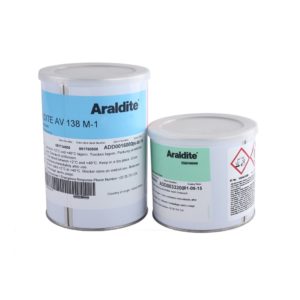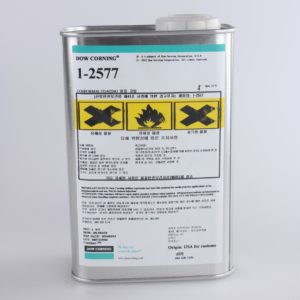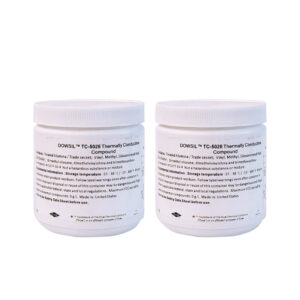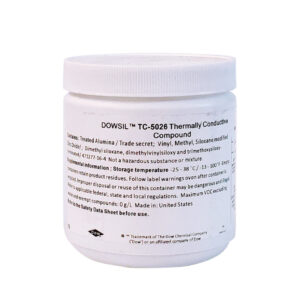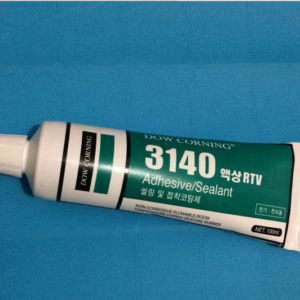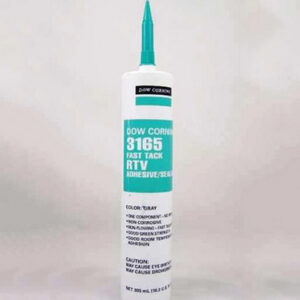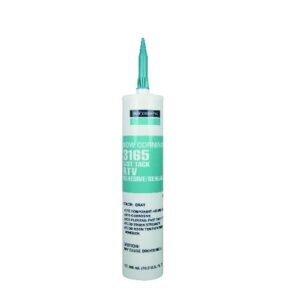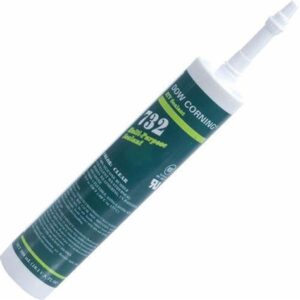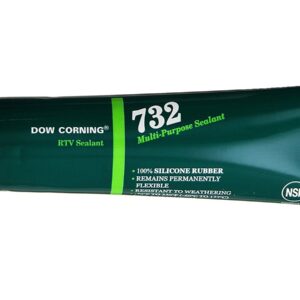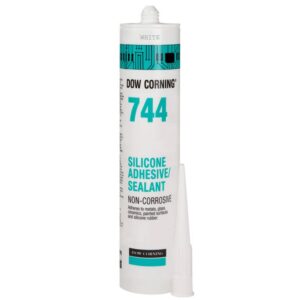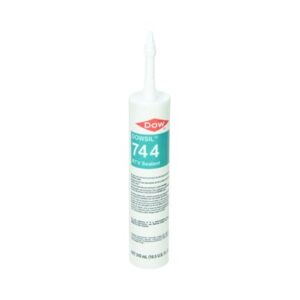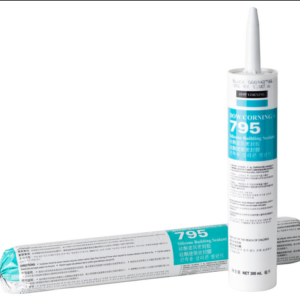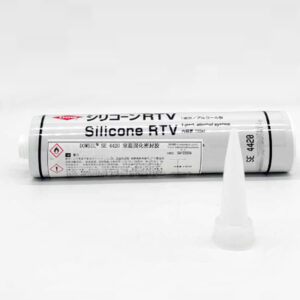-
Araldite AV138/HV998 glue two component epoxy AB structure gemstone sealing glue
Method of use
1. Pretreatment: It is recommended to use acetone or isopropyl alcohol (for plastics) to clean the adhesive surface to remove oil stains, stains and dust.Araldite AV138M/HV998 cannot be used with low alcohol, gasoline or paint thinner.Mechanically sanded or chemically cleaned surfaces provide stronger, more durable bonds.
2. Sizing: This product can be evenly coated on the pretreated surface to be bonded with a spatula.AralditeAV138M/HV998 usually 0.05-0.10mm thick adhesive layer can be the maximum lap shear strength of the bond.Bonded parts should be fully and clamped immediately after applying adhesive.
-
DoW coring glue 1-2577 full range of adhesive glue
Has good high frequency and low frequency dielectric properties
Excellent thermal shock resistance, good moisture resistance
Excellent optical transmission capability for solar installations
The cured coating has good weather resistance and UV resistance -
Dow corning DOWSIL SE 4450 Thermally Conductive Adhesive
Dow thermally conductive compounds are grease like silicone materials, heavily filled with heat-conductive metal oxides. This combination promotes high thermal conductivity, low
bleed and high-temperature stability. The compounds are designed to maintain a positive heat sink seal to improve heat transfer from the electrical device or PCB system assemblies
to the heat sink or chassis, thereby increasing the overall efficiency of the device. or PCB system assemblies are continually designed to deliver higher performance. Especially in the area of consumer devices, there is also a continual trend towards smaller, more compact designs. In combination these factors typically mean that more heat is generated in the device. Thermal management of PCB system assemblies is a primary concern of design engineers. A cooler device allows for more efficient operation and better reliability over the life of the device. As such, thermally conductive compounds play an integral role here. Thermally conductive materials act as a thermal “bridge” to remove heat from a heat source (device) to the ambient via a heat transfer media (i.e. heat sink). These materials have properties such as low thermal resistance, high thermal conductivity, and can achieve thin Bond Line Thicknesses (BLTs) which can help to improve the transfer of heat away from the device. -
Dow corning DOWSIL TC-5026 Thermally Conductive Compound
Dow thermally conductive compounds are grease like silicone materials, heavily filled with heat-conductive metal oxides. This combination promotes high thermal conductivity, low
bleed and high-temperature stability. The compounds are designed to maintain a positive heat sink seal to improve heat transfer from the electrical device or PCB system assemblies
to the heat sink or chassis, thereby increasing the overall efficiency of the device. or PCB system assemblies are continually designed to deliver higher performance. Especially in the area of consumer devices, there is also a continual trend towards smaller, more compact designs. In combination these factors typically mean that more heat is generated in the device. Thermal management of PCB system assemblies is a primary concern of design engineers. A cooler device allows for more efficient operation and better reliability over the life of the device. As such, thermally conductive compounds play an integral role here. Thermally conductive materials act as a thermal “bridge” to remove heat from a heat source (device) to the ambient via a heat transfer media (i.e. heat sink). These materials have properties such as low thermal resistance, high thermal conductivity, and can achieve thin Bond Line Thicknesses (BLTs) which can help to improve the transfer of heat away from the device. -
Dow corning DOWSIL™ 3140 RTV Coating
- One-part no mixing required
- Good flowability, Able to flow, fill or self-leveling after dispensing
- Room temperature cure, no ovens required
- Faster in-line processing with optional heat acceleration
- No added solvents
- UL 94 V-1, IPC-CC-830 and MIL-A-46146 tested
- Can be considered for uses requiring added flame resistance, IPC or Mil Spec testing
- UL 746E / UL746C Recognized
- UV indicator for manual and automated inspection
-
Dow corning DOWSIL™ 3165 Fast Tack RTV Adhesive Sealant
Composition • One-part
• Polydimethylsiloxane adhesive
Application Methods
• Automated or manual needle dispense systems
Applications • Sealing openings in modules and housings
• Adding mechanical stability to individual components
• Assembly of components on PWB/s
• Sealing in and around wired and electrical leads
• Yoke assembly -
Dow corning DOWSIL™ 340 Heat Sink Compound
Dow thermally conductive compounds are grease like silicone materials, heavily filled with heat-conductive metal oxides. This combination promotes high thermal conductivity, low
bleed and high-temperature stability. The compounds are designed to maintain a positive heat sink seal to improve heat transfer from the electrical device or PCB system assemblies
to the heat sink or chassis, thereby increasing the overall efficiency of the device. or PCB system assemblies are continually designed to deliver higher performance. Especially in the area of consumer devices, there is also a continual trend towards smaller, more compact designs. In combination these factors typically mean that more heat is generated in the device. Thermal management of PCB system assemblies is a primary concern of design engineers. A cooler device allows for more efficient operation and better reliability over the life of the device. As such, thermally conductive compounds play an integral role here. Thermally conductive materials act as a thermal “bridge” to remove heat from a heat source (device) to the ambient via a heat transfer media (i.e. heat sink). These materials have properties such as low thermal resistance, high thermal conductivity, and can achieve thin Bond Line Thicknesses (BLTs) which can help to improve the transfer of heat away from the device. -
Dow corning DOWSIL™ 7091 Adhesive Sealant
Designed for applications which demand a strong but flexible bond, such as when
bonding materials with differing thermal expansion rates, e.g. glass to metal or glass to
plastic.
Unprimed adhesion to commonly used materials including enameled and painted steel,
aluminum, ceramic and glass as well as to certain plastics used in engineering
applications.
Used as a Formed-in-Place Gasket (FIPG) material. -
Dow corning DOWSIL™ 732 Multi-Purpose Sealant
All surfaces should be thoroughly cleaned and/or degreased with DOWSIL™ brand OS
Fluids, naphtha, mineral spirits, methyl ethyl ketone (MEK) or other suitable solvent.
Solvents such as acetone or isopropyl alcohol (IPA) do not tend to remove oils well, and any
oils remaining on the surface may interfere with adhesion. Light surface abrasion is
recommended whenever possible, because it promotes good cleaning and increases the
surface area for bonding. A final surface wipe with acetone or IPA is also useful. Some
cleaning techniques may provide better results than others; users should determine the best
techniques for their particular applications. -
Dow corning DOWSIL™ 744 RTV Adhesive Sealant
Dow one-part moisture cure adhesives are generally cured at room temperature and in an
environment of 30 to 80 percent relative humidity eliminating the need for curing ovens and
the associated costs of energy and capital. Greater than 90 percent of full physical
properties should be attained within 24 to 72 hours and varies according to product. Faster
manufacturing throughput can be achieved since the adhesive and component can be
handled in much shorter times of about 10 to 120 minutes, depending on the adhesive
selected and the amount applied. These adhesives are not typically used in highly confined
spaces or where a deep section cure is required as they generally cure from the exposed
surface inward at a rate of 0.25 inch per seven days. Cure progresses from the outer
exposed surface and is dependent on the moisture in the air. Working time is generally a
few minutes to an hour for these products until a surface skin begins to form. Mild heat
below 60°C (140°F) may be used to increase through-put by accelerating the cure. Dow
silicone adhesives retain their original physical and electrical properties over a broad range
of operating conditions which enhance the reliability of and service life of devices. The
stable chemistry and versatile processing options of these adhesives offer benefits for a
variety of device assembly needs from increasing component safety and reliability, reducing
total cost or increasing the performance envelope of devices or modules. Underwriters
Laboratory (UL) 94 recognition is based on minimum thickness requirements. Please
consult the UL Online Certifications Directory for the most accurate certification information -
Dow corning DOWSIL™ 795 Silicone Building Sealant
- Highly resistant to weather, UV and temperature extremes
- One-part, medium-modulus neutral-cure adhesive/sealant silicone material
- Supports glass and other panel materials under high wind load
- Weatherproofs substrates such as glass, aluminum, steel, painted metal, EIFS, granite & other stone, concrete, brick, plastic
- Ready to use as supplied with all-temperature gunnability, easy tooling and low-odor curing
-
Dow corning DOWSIL™ SE 4420 Thermally Conductive Adhesive
- One-part RTV-cure thermally conductive materials cure with moisture exposure to produce durable, relatively low-stress elastomer with a noncorrosive by-product. PCB system
assemblies are continually designed to deliver higher performance. Especially in the area of consumer devices, there is also a continual trend towards smaller, more compact designs. In combination these factors typically mean that more heat is generated in the device. Thermal management of PCB system assemblies is a primary concern of design engineers.
- One-part RTV-cure thermally conductive materials cure with moisture exposure to produce durable, relatively low-stress elastomer with a noncorrosive by-product. PCB system


